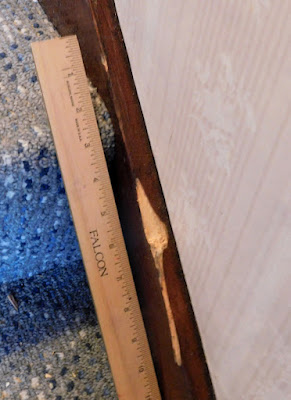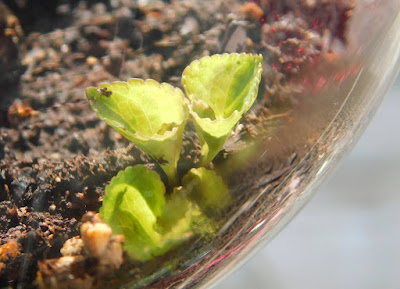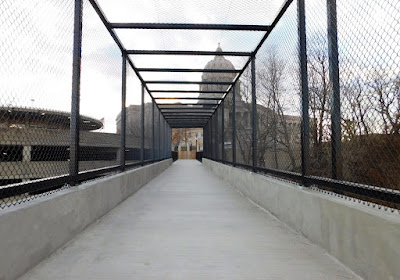Are you ready for spring yet? I am.
Back in November and December, this winter was really slow to start, but now that we’ve finally started getting frozen precipitation, we can’t seem to shake it off. We finally got a big snow dump in the middle of January. Then it mostly melted, and then we got more on the first of February. Then that was mostly gone, and now we had snow again on the seventeenth. It wasn’t a lot of snow, but around here it is underlain by about three-fourths of an inch of grainy, icy sleet, which has formed a stubborn, un-shovelable layer on the sidewalks. Geez.
Each time we have gotten snow, people have dutifully cleared roads and parking lots, and we’ve shoveled our sidewalks and driveway and steps (yeah, we have lots of sidewalks, since we live on a corner). In the process, we’ve all created little hills of snow, which last forever, especially where it’s shady.
So, since the first big snow in January, we’ve never really completely gotten rid of the snow before the next dump. This has become kind of unusual for us, especially this late in the year. In fact, in recent years, the middle of February is when I start removing dead plant material from our flower beds, so the daffodils and such can come up in the clear. Because by mid-February, our daffodils are coming; indeed, the ones in front by the house are already at least four inches tall. The front of our house faces due southwest, so it’s sunbaked and amazingly warm, especially as the light and heat are reflected of the front of the house, so those daffodils are practically in a greenhouse, essentially “forced” to develop and bloom ahead of their compatriots elsewhere.
And that’s what I’m getting to: forcing flowers in springtime. It’s really popular to “force” into bloom various bulbs such as narcissus (those extremely fragrant “paperwhites,” for example), other daffodils, and hyacinths. Professionals force them in greenhouses for the trade. Go to your local grocery store floral department and you’ll see examples.
But it’s possible to force plants you find in nature, or in your backyard.
NOTE THAT I AM NOT SUGGESTING YOU DIG WILD PLANTS FROM PUBLIC LANDS OR FROM PROPERTY THAT ISN’T YOURS. . . . Please behave!
But you know . . . our backyard is the opposite of a golf course. And it’s not natural, either. Yards like ours have been called “freedom lawns,” since they’re free of pesticides, herbicides, and unnatural monocultures of high-maintenance turfgrasses. Admittedly, along with our smattering of various lawn grasses, we also have invasive star-of-Bethlehem and a variety of nuisance nonnatives and natives, such as Indian strawberry, creeping Charlie/ground ivy, field pansy, plantains, and common violets of various colors.
It’s the last one that I’m “forcing” this winter. The common violets that grow all over in our backyard develop rather coarse rhizomes at least about an inch long. As a kid digging in the soil of my parents’ backyard, I fancied these were like tiny iris bulbs, and I treasured them.
And I still treasure them; I have a hard time treating them like weeds, so when I’m working in a flower bed, such as my herb garden, I tend to pull out the violet rhizomes and transplant them elsewhere. Can’t bear to toss them into the composter. I really love violets.
So last week, before the latest snow event occurred, I knew where to go in the backyard with my trowel to find a nice big violet rhizome to dig up. I planted it in some fancy potting soil at the bottom of a small fishbowl-shaped, bubble-ball glass vase.
I’m giving it plenty of water, and it gets oodles of sunshine in our front windows. On gray days, I stick it under an intense desk lamp.
And here’s what we’ve got so far. It’s making me happy!
And for the record, here’s where the idea came from: Leonard Hall’s A Journal of the Seasons on an Ozark Farm (Columbia: University of Missouri Press, 1980), 207.






























